Life, Death, & The Sefirot: FFVII’s History & Remake’s Future in a New Symbol of Reunion
by X-SOLDIER June 29, 2020 0 commentsSephiroth & the Sefirot within the Original Game
The Sefirot’s Structure – Reflected in Master Sephiroth’s Design
Now that we understand how Sephiroth’s themes are intrinsically tied into absolutely everything else in the rest of the game, the next key point is diving into a very prominent feature that establishes several core visual & thematic elements in everything about Final Fantasy VII‘s world as its own – the Sefirot. This Kabbalist Tree of Life diagram shows circular points representing spiritual attributes known as Sefirot, which are joined by interconnecting paths of life-force energy continually drawn between them. This structure is a key inspiration for both Materia being circular crystalized attributes of knowledge from the Lifestream, as well as the idea of having physical structures that enable individuals to slot & connect them by having their energy flow into one another within weapons and armor. This then enables characters in Final Fantasy VII‘s world to wield magical abilities from concentrated spiritual energy, and also combine Materia’s in-game abilities by forming connections between them. Even before the characters & story were reformed, these traits were the foundation of Final Fantasy VII‘s direction. These Jewish spiritual concepts are all derived from the book of Genesis, which is used later in the Compilation in Crisis Core for the name of a key character linked to the other Shinra science project involving Jenova – but in Remake is only indirectly confirmed with a mention of G-type SOLDIER.
Sefirot is also the clear namesake of the game’s main antagonist, Sephiroth. His final physical form in the original game uses the term, “セーファ” which has never had a really strong translation into English – but it’s generally agreed that the name “Safer Sephiroth” appearing in the game is possibly the least accurate of any option, despite audibly matching the literal katakana pronunciation “seh-fa”. I’ll use the original concept art’s name “Master Sephiroth” to refer to this form, since I need to cover that the Japanese name is likely meant to be an intentional combination of several terms:
- The Torah-based books of divine knowledge are known as “Sefer“, which makes sense given that Master Sephiroth has absorbed all of that knowledge in the Lifestream on his path to ascension.
- The highest order of angels in Christianity are “Seraph” whose bodies have six wings – which we see in the lower half of Master Sephiroth’s new physical body represented as the One-Winged Angel.
- The Sefirot’s singular form is a “Sefirah” which is important specifically because the Sefirot diagram used for Final Fantasy VII is the one that shows eleven sefirot – despite the fact that from a religious standpoint there are only ten. This eleventh (Malkhut) represents a state of all of ten Sefirot in balance, as well sharing a duality with the first Sefirah (Keter). This particular relationship between two of the Sefirot that allows there to technically be eleven is important – and we can actually see all of that represented within Master Sephiroth’s final boss design when viewed side-by-side.
Note: The Sefirot’s Right Column is aligned with Master Sephiroth’s right side, so nothing is actually being mirrored here, it is mapped 1:1. The fact that Sephiroth is facing forward rather than away is what makes the layout appear to be on different sides. This right-side-specific Sefirot correlation to the right side of Sephiroth’s One Wing will be especially important again later on when we look at Remake‘s new symbol.
The (Ten) Sefirot & Their Meanings
The Sefirot are ten different emanations of reality in some form, and there are several ways that they can be thought of in order to represent this spiritual concept:
- The ten illuminations of God’s Divine Light as it manifests in His Creation
- The ten powers or faculties of the soul
- The ten structural forces of nature
Final Fantasy VII uses a combined concept of all of them, thanks to how these core concepts are already much more closely intertwined in spiritual backgrounds found in Japan, like those in Shintoism. This is how the concept of the spiritual energy of all living things returning to the Planet is manifest as a force of nature in the Lifestream & the cycle of life & death as raw spiritual energy that itself is the raw essence of creation. That’s why the representation of the active presence of “god” is the Will of the Planet that in the game’s story starts in strife with its creation (Humanity) because the Mako reactors are killing it. This is why the Lifestream voluntarily saving humanity is a key part of the ultimate victory at the end of the game. Jenova is a cosmic entity of apocalyptic power, but its ability to transform and absorb that spiritual knowledge is why Sephiroth’s goal is to never have his soul return to the Planet, but to persist his consciousness to become the embodiment of the entire Sefirot made manifest as a single individual.
To achieve that, we don’t see Sephiroth obtaining ten different pieces of power. The story approaches this task from a more human and spiritual direction. In Final Fantasy VII, the Sefirot take on more generalized forms, where the flow of energy represents individuals or even concepts in general that help to dictate the overall structure within the story. As such, the ten Sefirah are not directly defined things within the game world itself. Rather they are a meta layer of design scaffolding that the game world’s fiction all adheres to, so that its fantasy concepts have familiar cultural echoes, and the story also has certain rules that it follows to match those themes as it examines the emotional journey of life & death itself.
The First Three Sefirot (& Da’at) – Superconsciousness & Conscious Intellect

Let’s start with the first & highest Sefirah:
- Keter – “The Crown” This is divine inspiration & will to create, that exists beyond human’s conscious intellect. It is the representation of the superconscious awareness of God, which grants the ability to see beyond material reality itself and perceive the energy & consciousness behind that very reality. It is the head of the vertical structure called the, “Pillar of Mildness” which is connected to balance. I’m also going to mention the Japanese personal pronoun 私 (watashi) for a reference related to Remake’s Sephiroth later on.
In Final Fantasy VII, Jenova is one representation of Keter from an alien world – her head in a comatose state of superconscious awareness instinctively triggering the remnants of her cells together in a biological Reunion. Additionally, the Planet is also Keter but for the world where everything takes place. In the state we find it in Final Fantasy VII, without the Cetra it has no conscious awareness to act. In Remake, like Jenova’s cells, it has Whispers to wordlessly & emotionally protect the fabric of the Destiny that it is superconsciously aware of, but through spiritual energy, rather than literal biology. This dichotomy that is balanced between the “natural cycle of life & death” vs. “supernatural physical Reunion” approaches of what both worlds represent here are critical to remember in Remake.
This is why in his originally-named Sephiroth Rebirth form (whose name matches concepts of Divine rebirth in Christianity), we can see Sephiroth’s human-sized torso emerging as the “crown” of his own head. Later this form became officially known as Bizarro Sephiroth, but we can see that there is a fusion of angelic & demonic features echoing how Jenova’s true form was hidden behind the angelic bust that Sephiroth rips away to reveal her in Nibelheim. It’s also important because Sephiroth is manifesting the duality of both cosmic entities at once, but he is transforming physically to appear to only represent an angel who would normally be seen as a protector of the Planet. The superconscious aspect of Keter is also why Sephiroth & Cloud have a one-on-one confrontation at the end of the game which takes place in a state of superconsciousness, and in Remake is located at a metaphysical space known as the “Edge of Creation” since Keter is the will to create from that superconscious state – but that action doesn’t happen until all ten are in balance, which we’ll cover with the “fourth” Sefirah.
The next two Sefirah are also heads of pillars & represent conscious intellect:
- Hokhmah – “Wisdom” This is an unbound revelation and limitless idea, shown in the form of Sephiroth’s wing showing his connection to the Divine. It is the highest point of the “Pillar of Mercy” connected to revelation, hence why the wing is being revealed on this side of his body, and it replaces his right arm entirely.
- Binah – “Understanding” The is the reason for that idea to take form. It is the highest point of the “Pillar of Severity” connected to concealment. This is why the wing is concealed on this side of his body, leaving his left arm intact in its human form – which is the hand that wields the Masamune, used for his acts relating to concealment or judgement – like decapitating Jenova & killing Aerith.
This unique “fourth” Sefirah isn’t counted towards the total but represents the arrival of the conscious state of Keter:
- Da’at – “Knowledge” This single Sefirah is actually a representation of all ten Sefirot being united as one – and so it doesn’t count as being a unique Sefirah, thus leaving the total at ten. Additionally, it is also depicted as being the conscious manifestation of Keter’s superconscious state. I’m also going to mention the Japanese personal pronoun俺 (ore) for a reference related to Remake’s Sephiroth later on.
Jenova’s cellular ability to obtain the knowledge of the dead from another world, along with the power of physical transformation is what allows Sephiroth to usurp the destiny of the Cetra and appear as Da’at to the Planet’s Keter – thus allowing him to do things like not be targeted by the Weapons all around him at the Northern Crater. This is also why at Nibelheim, he specifically cuts off Jenova’s head (Keter) to draw the Reunion to himself – he ultimately seeks to wield the power of creation from both worlds. This is also what allows him to declare that he has surpassed the Cetra and become something more, because he is also the representation of Da’at for Jenova, his alien mother. His divine duality exists for the Sefirot entities of two different worlds which is why in the Bizarro/Rebirth form – he is both the body & also the crown of his own head at once, fused with demonic & angelic features in a state of transformation.
When that Bizarro Rebirth completes and he transforms into the Master Sephiroth form – he is the singular Sefirah that is simultaneously the unification of all ten Sefirot – hence the name “Sefirah Sephiroth” makes sense, and this physical form shows unified points for all of the other ten Sefirot being coalesced into a single being in its design. There is a point shining on the apex of the halo, where Keter would be located when Sephiroth’s arms are Binah & Hokhmah – making Sephiroth’s body Da’at in that interpretation, since his physical human form is acting as biological Da’at for Jenova’s world. This is why the secondary halo is specifically centered and lined up behind this radiant point which we can see in the early Master Sephiroth concept art. This is done so that the entire design matches the 11 Sefirot Yosher-Upright layout. The point on Sephiroth’s lower halo where Keter would be is simultaneously intended to be represented as the Planet’s powers coming together, and Da’at being completed and visibly manifested in his angelic powers.
This design brilliantly reflects the concept of Da’at & Keter having a conscious & superconscious duality, which is a key part of the story design for Sephiroth & Jenova’s relationship, where he takes the conscious actions to dictate her Reunion. It also reflects the concept of this same duality in Sephiroth usurping the Planet after killing the last of the Cetra. This is why he’s controlling both sides in order to alter the natural cycle for himself & his own ends, rather than listening to the true will of the Planet or Jenova, despite them being the planetary entity equivalents of the “Will of God” in Final Fantasy VII‘s setting. This is why in Remake Aerith is so revolted by Sephiroth, saying, “Everything about you is wrong.“ – because his powers as a hybrid make him a Human, who – without being in balance with the Planet, wields a power that still allows him to extract its knowledge thanks to Jenova, and ultimately allows him to exist as “Da’at” to both – even while the other ten Sefirot are still out of balance, which should normally be impossible.
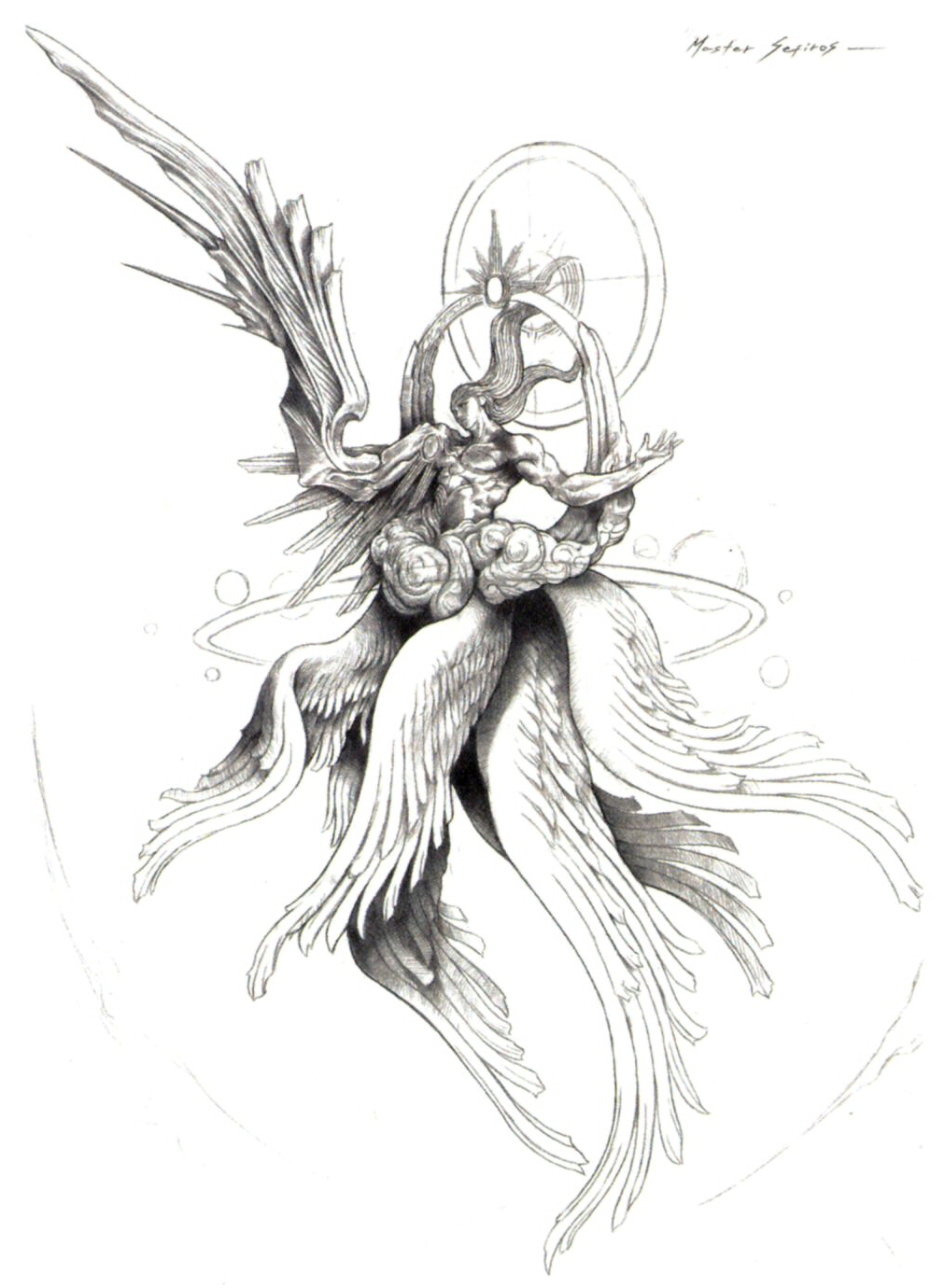
Everything about the first three Sefirot here are all forms of divine intellect, which matches how Sephiroth obsessively reads through the library in Nibelheim’s Shinra manor, and then eventually absorbs knowledge from the Lifestream itself to be “Sefer Sephiroth” as a source of knowledge. These three Sefirot represent a core structure for everything about the game’s spiritual framework, and they establish how the three “Pillars” of the Sefirot are defined as it applies to the structures of the game’s story. Again, these are things that only control the story in its design because this system was used in the creation of Final Fantasy VII‘s world. This is why those rules – even when they exist – haven’t ever been overtly defined for the characters in the story itself, but they still allow us to look at incredibly specific details, and understand how they interact with one another.
The Seven Conscious Emotional Sefirot – Six Divine & One Mortal Aspect of the Divine’s Creation
The final seven Sefirot are all forms of emotion – the first six are Divine & the final one shown at the bottom of the Sefirot is Mortal. We’ll cover this final & mortal Sefirah on its own, so we’ll start with the six emotions connected to the Divine:
- Hesed – “Kindness” Grace, giving, & inspiration
- Gevurah – “Severity” Strength, discipline, & judgement
- Tif’eret – “Beauty” Compassion that keeps the above two opposed emotions in balance
- Netzah – “Eternity” Enduring and perpetual victory
- Hod – “Splendor” Withdrawl and sincere surrender
- Yesod – “Foundation” Coherent vision & remembering the task that must be accomplished
This is why in Crisis Core, there are six wings surrounding the human form of the goddess statue, as well as six wings on Minerva’s halo in her physical form, and also a total of seven Goddess Materia laid out in the Banora Underground – with three on either side of her & one placed directly on her – matching the wings’ layout on Master Sephiroth’s lower body. In that Compilation title, the Goddess represents a force of the Will of the Planet. The name Minerva comes from Greek mythology but her story is connected to Genesis, who’s of Abrahamic origin. This, as well as the statue’s Virgin-Mary-like appearance is likely meant to reflect how the New Testament was written in Greek, but the Old Testament is mainly in Hebrew/Aramaic, combining ancient scriptures to the current setting.
It’s important to note that there are no indications whether any of those things from Crisis Core will be adapted in Remake. Nonetheless, it’s relevant to examine those things to verify that whenever these specific elements have been reused in sequels to the original game. Seeing that they are still internally consistent with the original design guidelines of how Final Fantasy VII established these six wings helps to provide supporting evidence for their use. They are consistently a visual representation of a being who is wielding the power associated with the Will of the Planet, and the six divine wings surround a human whose active role is to bestow a gift onto another matching the mortal Sefirah, Malkhut.
In Final Fantasy VII, Sephiroth’s lower body is severed and doesn’t exist from the waist down as seen when he’s encountered by the party in the Northern Crater. This gives his physical and his Bizarro Rebirth form the same four physical features as the angelic-looking Jenova Doll in front of her tank; a head, a torso, and two limbs – representing the points on the previously described Sefirot of superconsciousness & conscious intellect. This intentional conceptual separation between the conscious intellect & conscious emotions exists physically for him when Cloud defeats him at Nibelheim after Sephiroth has ripped down this artificial construction down & beheaded her. This is because once Sephiroth begins his final transformations – this missing lower part of his body is constructed entirely from the energy he absorbs from the Planet’s Lifestream. The wing that replaces his right arm resembles the one on the Jenova Doll and is representative of his own power from the divine intellect, whereas these six “Seraph Sephiroth” wings that compose the bottom half of Master Sephiroth map to the six divine emotions. This is why he was still explicitly called the “One-Winged Angel” – long before Advent Children showed his human form with a single black wing for the first time – despite the very first version of this Divine form to show his own wing, also having six additional wings.
In a Kabbalist context, these six divine aspects of emotion could also be understood as the parts of the soul that remain active after death in the world of Final Fantasy VII. This is why a core theme is humans still being able to hear the cries of the Planet, and in Remake Aerith describes the source of the Planet howling in pain. This is also why the Will of the Planet is manifested in Whispers that act impulsively to guide destiny without speech. It’s only ever two beings who can learn from the Planet & the Lifestream directly; The Cetra – by being in harmony & having the power of Da’at who have the ability to obtain or extract knowledge from the Lifestream by speaking with it, and Jenova – because it is a separate superconscious entity associated with the previous Sefirot. This is all connected to what Sephiroth is doing when absorbing energy from the Lifestream in the Northern Crater. When he achieves a critical mass of power, this is represented in the six wings we see repairing his missing lower body, and bringing him to the last step that he needs to achieve victory – a final interaction with the mortals, bringing us to our final Sefirah:
The seventh emotion extends the “Pillar of Mildness” from the god in Keter directly to its mortal creations:
- Malkhut – “Kingship” Exaltedness & Humility. The Giver & the Receiver. The energy of all other Sefirot flow into this one, as it has no light of its own. This is because it is the one part of the tree that represents Humanity rather than a direct aspect of God. – This is where the relationship between Da’at & Malkhut becomes very important.
In Final Fantasy VII Keter & Da’at have a duality represented with the Planet/Jenova, & human-alien hybrid Sephiroth. At the opposite end of the story, Malkhut has that same duality balanced between the half-Cetra Aerith & the Jenova-experiment Cloud. They are the main characters, because in Kabbalah, the perception of the Divine Light can occur in Malkhut all times when humans are engaging in acts of altruism. This is because this is an aspect of the Divine’s Creation, it has no Divine light of its own, and thus the energy of all the other Sefirot flow into it, so that it can then reflect the Divine Light like the moon does – which is why an altruistic act of giving is representing that aspect of the Divine.
This final Sefirah is what must be in place in order to bring about a state of unity between all ten Sefirot – at which point the revelation or concealment of that Divine Light from God consciously occurs. This is why Sephiroth controls that Meteor is being revealed as Holy is being concealed, in order to achieve that balance. It’s also why the White Materia has to be activated by Aerith, and then she’s killed by the Masamune in Sephiroth’s left hand & Holy is concealed in the heart of the Planet, while the Black Materia is activated by Cloud and he’s revealed to be an amalgamated puppet to Jenova’s Reunion & Meteor is revealed in the sky.
Due to the fact that Malkhut needs to be active before Sephiroth’s unity with the Planet or Jenova can be achieved, and the rules in Kabbalah define that this only occurs by a mortal giving something altruistically, this is why the story follows the particular beats that it does. This is also why Sephiroth needs both of them and can’t just do those things on his own – there have to be a separate giver & receiver. This is equally why once the Planet or Jenova have other creations, that this rule also applies to them. Those acts are why in the Master Sephiroth design, the light shines out through Da’at, which is the representation of all ten Sefirot in balance, and forms the second halo behind him.
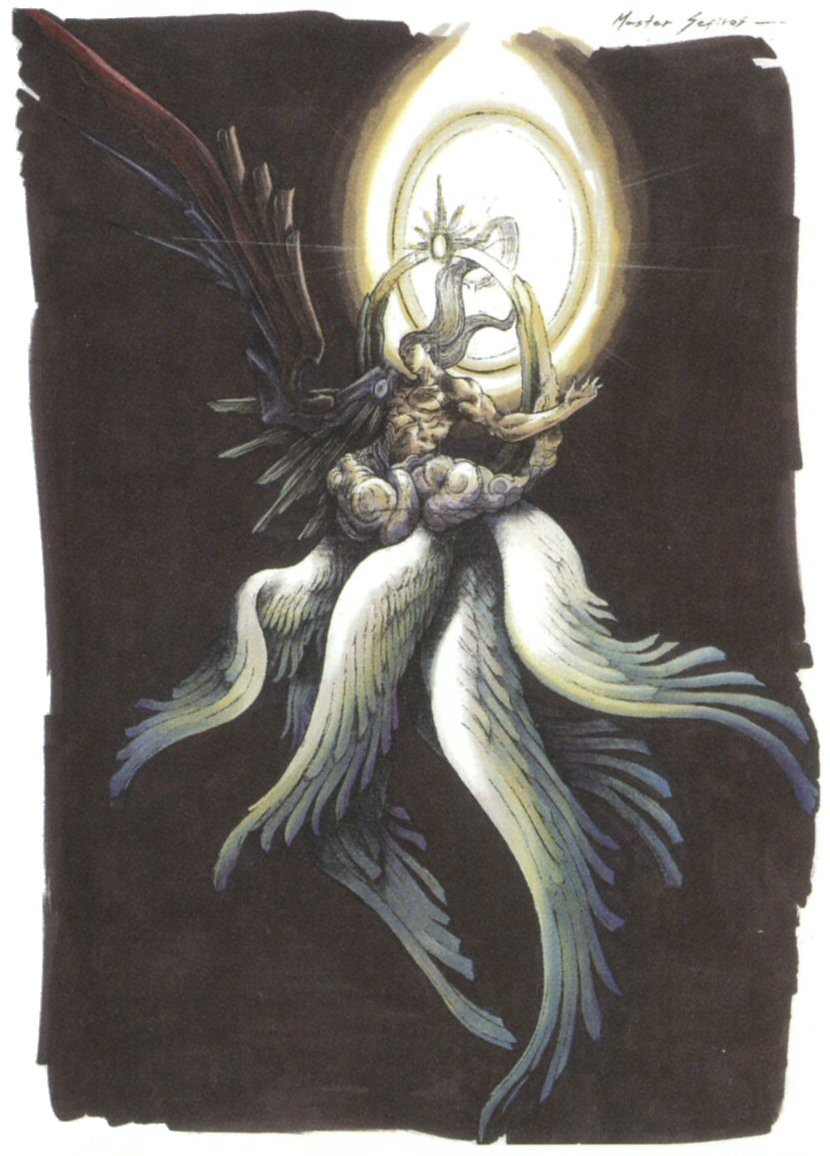
This reinforces that Da’at is the point depicted in the colored version of the Master Sephiroth concept art, matching the duality and giving us a clear interpretation of those concepts for both Sephiroth himself, but also for the key elements of the story between the protagonists & antagonist. Master Sephiroth has all ten versions of both Sefirot in balance, appearing to be the Planet’s version of Da’at, but utilizing the motivations of Jenova’s version of Da’at. He is the singular form of the collective aspects of both worlds. He is everything that represents mastery over nature, the soul, and the divine – filled with the full knowledge & power of the Lifestream & Jenova all bent to his Will. From the story perspective, he is using the Planet as a resource to obtain the power of creation & make a future for his own ends. Cloud & Co. defeating him frees Holy to finally be released – thus causing the divine energy to flow naturally back into Malkhut. But that’s why Holy & Meteor are locked together – because there is no conscious form of Da’at to control what’s happening. It’s the returned balance between Humanity & the Planet that causes the Planet itself to use the Lifestream in order to end the conflict – which is a moment of Divine Creation & why the game’s ending is left ambiguous.
With the core structure of the Sefirot system covered, now we need to address the final few bits of important overlapping religious terminology & parallels in the context of how they’re used in the game. These will be necessary to exploring the paths of the Sefirot in sufficient detail as they pertain to Final Fantasy VII‘s story in Remake. Each of them are exceptionally important in the thematic exploration of what that reveals, so I’ll also cover some additional details of how each of them get adapted for the original game & expanded upon in Remake. This is the last piece that will let us make a thorough interpretation of the new symbol we see on Remake‘s Sephiroth copies.
Onward to: Additional Key Religious Terminology & Parallels in FFVII

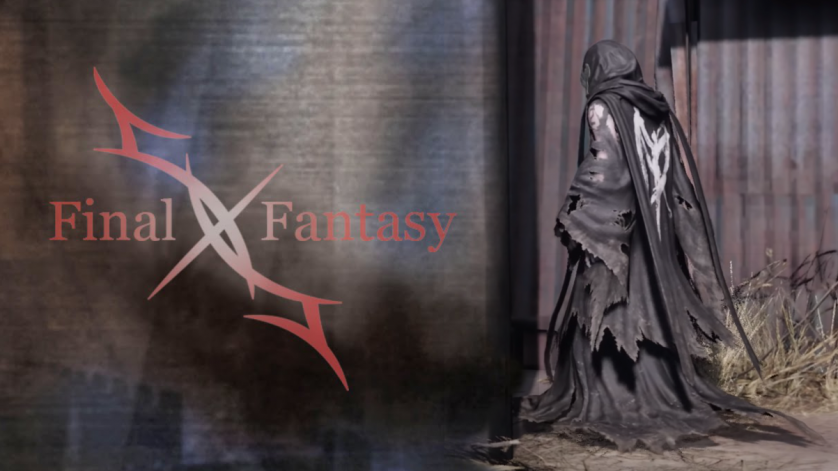

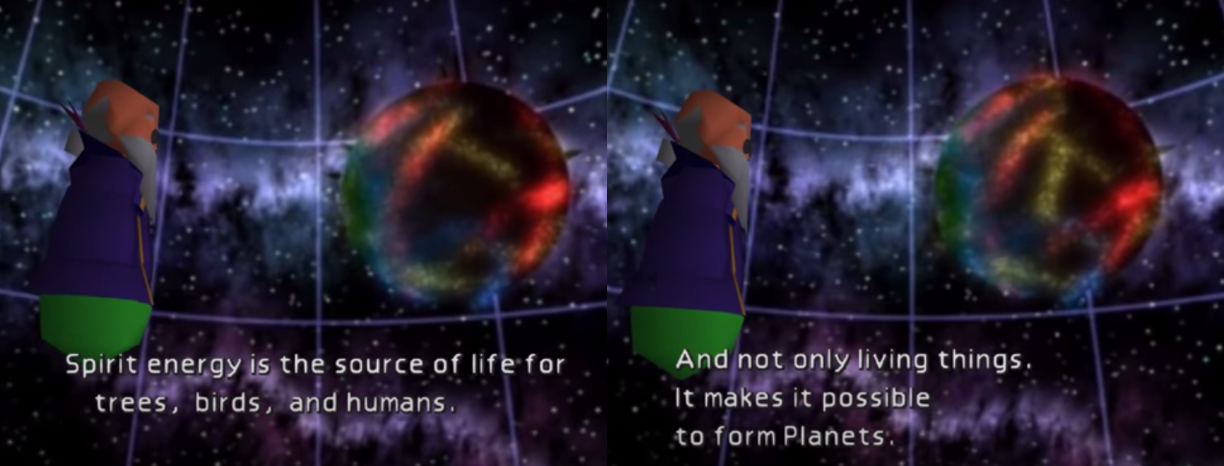


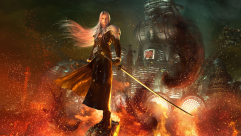
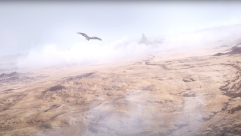
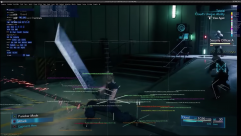

No comments yet
Log in or Register
This is absolutely incredible and I’m sharing it everywhere. Great work X- Soldier.
I’m really glad that you appreciated it, and thanks much for sharing it as well, Schrodingersbabyseal! Hope ya have a good weekend!
Very impressive article as alwyas X-Soldier. Tbh, I still don’t like the whole concept of fate and the meta elements for how overbearing they are. The whispers, specifically, are insanely invasive and not subtle at all. Nonetheless, this was a very interesting read and I especially enjoyed your interpretation of the perspectives of Cloud, Aerith and Sephiroth for the upcoming parts.
Thanks much, X7Strife. Honestly, I felt exactly the same way about them at first, but the more time I’ve spent looking at them, thinking about the original game, and considering what Remake means to the team who’s actually doing it, the more I’ve come to really appreciate what they mean to the story itself. They feel more valuable and less like some slapped on addition to make things new like they did at first.
Fate seems like an odd thing to examine at first, but when you’re talking about life & death… it’s an even more odd thing to ignore. It’s invasive because that’s what it’d be like going back & reliving events you want to change with your whole being, but not being able to. I can’t guarantee that they’ll nail the execution once it’s all said & done, but at this point I feel very confident in what they’re presenting with them & why.
Personally, I’ve found that it’s best not to think of the Whispers as being purely meta concepts – even though they do also serve that purpose in Remake. It helps a lot to view them just like the Planet’s other existing spiritual defense mechanisms like the Weapons & Materia. In the original game they would have been completely invisible to us, since that game just follows the Sefirot’s paths, rather than knowing things about the paths in order to try deviating from them. Everything about what they are matches with the original game in their overt physical presentation, as Final Fantasy VII has never been subtle with the presentation its spiritual concepts once you know what you’re looking at, which is what I wanted to do a lot of in this article.
There’re actually a lot of ways that the Whispers have already been adhering to the in-world mechanics with the the Planet & Shinra’s Science experiments, too. Despite being new and feeling a bit strange, they’re still perfectly aligned with spiritual core of Final Fantasy VII, as well as a lot of the in-game lore as well. I briefly mentioned some of that on Page 7 (in the bit about Stroke II) that I’ve been planning on breaking those things down in a future article, and this is all sort of why I wanted to cover these things first before poking around at some things about the Whispers from a purely in-game-world perspective.
I hope that whenever I get to dive into a bit more detail on them from that perspective that maybe that’ll help ya find them a bit more appealing & less invasive. Either way, I’m glad that you found some things to enjoy from all of this despite not being to hot on the Whispers! Have a good week!
Thank you for this thoroughly researched article!
I’d seen the joke(?) before that David Bowie is in every video game, but this really spells it out as far as Sephiroth. I could never quite get into Bowie’s art rock but now I want to see “The Man Who Fell to Earth”!
I wonder if Seph’s silhouette (fashion-wise) was also inspired by Bowie’s dress + boots for the cover of “The Man Who Sold the World”?
Glad to’ve provided it!
I saw a lot of those while I was doing research, and it was amusing that I was adding yet another example to that list. “The Man Who Fell to Earth” is quite an abstract Sci-Fi film and there’s a ton of nudity in it, but it’s SO very interesting looking at it as something with links to the themes in Final Fantasy VII.
I think that Sakaguchi had some input about Sephiroth’s & Aerith’s designs (they have similar hair because they were initially going to be siblings in the game), but I wouldn’t be too surprised if there were even more Bowie influences than I managed to pick up. 😀
I have to be honest: I did cry in the end.
I’m very sorry for your loss, but knowing that this is what ultimately allowed you to understand more deeply the authors’ intentions and feelings about where they want us to go in the game is inspiring to me. Making us reflect on life, death and our memories, once again, would be the greatest gift they could give us. I really hope you’re right.
It’s amazing what you’ve managed to do. Thank you.
That means a lot to me, so thanks so very much for taking the time to let me know. I did cry several times over the course of doing research & writing this. Additionally, I just learned over the weekend that another friend of mine passed away unexpectedly – and having just written all of this really helped me a lot in processing that, too. I’m working on a semi-companion piece to this one that covers some different but related topics, so I’m hoping it’ll be just as insightful.
Again, thanks for reading through this and letting me know, & I hope that you have a really wondering week!
I haven’t even finished reading this and my mind is already blown. I’ve also been reading the unused dialogues from the OG and man does it give a lot of insight into some of the way remake was done. At least in my opinion. FF7 is my favorite game/story of all time and deep diving into understanding it has been a passion since remake was released. Thank you so much for all this research and concise explanation. I wish i had a friend like you to talk to about all this ff7 passionate stuff, no one around me GETS it.
There was an interview with Kitase in Famitsu that got translated today, and it loosely touched on a couple things I mentioned here in ways that were super satisfying.
I’m glad that you’re enjoying it so far & hope that it carries on with you to the end! I’m slowly working on more, so hopefully that’ll help! It’s a passion that I deeply enjoy, so thanks for taking the time to read & provide extra encouragement for doing this sort of thing!
Hello X-SOLDIER!
I finished the original FF VII a couple of days ago and was really impressed by story, characters and themes of the game and I want to understand more. Unfortunately, I can’t play the Remake right now and I wanted to ask if your whole article has Remake spoilers or I can read some early pages. Or maybe there is some other good article with in-depth analysis of the original game?
Heya literious! I’d very much recommend steering clear of this one for now. There are definitely little bits and pieces of Remake-related information scattered throughout, since the symbol that it’s focused on only appears in Remake.
Really glad that you finished the original though, and you’re more than welcome ta join us on the forums to chat about things there!
In some translations Netzah is pronounced more like Netzach…which would be interesting, since Netzah is broken off from the tree. Remake could be attempting to reestablish his presence.
Just amazing, i’m looking forward for your next analysis!
You bring so much to fans of ffvii like me
thanks and thanks again